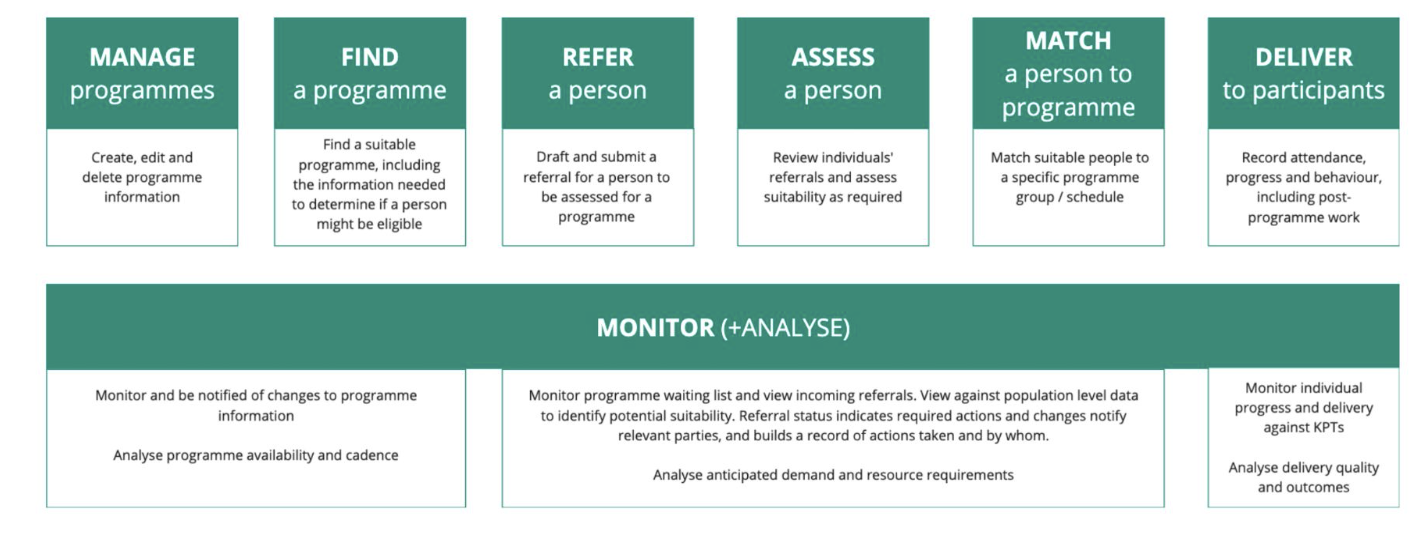
We built on our work for people in prison to design better programmes for people on probation
As part of our ongoing work with the Ministry of Justice, they asked us to look at how to improve their community programmes that aim to reduce reoffending
Accredited Programmes are behavioural programmes and interventions delivered for people on probation or in prison. Their aim is to change the thinking, attitudes and behaviours that might lead people to reoffend.
Our work focussed initially on the programmes delivered for people in custody (when people are in prison). But from January this year, the project was expanded to include looking at how to improve the management of Accredited Programmes delivered for people on probation in the community.
Testing what we do and don’t know
We carried out a discovery and alpha so we could make some clear recommendations to MoJ on how to improve programme management in the community.
“My appreciation for the great work you and the team have completed in a short space of time on Accredited Programmes in the Community, and in addition for the clear and comprehensive final report you’ve provided. This makes the findings really easy to follow and understand, and ensures we don’t lose the value of this work now you/dxw have offboarded. The work has put us in a strong position to make an informed decision now on the way forward, so kudos to you and the team.”
MoJ Service Owner
We wanted to see if the operating model we had developed for custody programmes was a viable solution for meeting user needs in a community setting.

A subsequent pre-discovery into community needs found that the above service transactions were broadly consistent between custody and community settings, but some adaptation would be required.
We kicked the project off with a collaborative session to make sure we were clear about the scope of the work, do some problem framing, and identify our assumptions and knowledge gaps. After some stakeholder mapping and planning, our multidisciplinary team then carried out some discovery research.
Discovery – identifying the challenges and opportunities
We focused on learning more about the community setting to understand how it differed to custody, and identifying user pain points. We ran discovery interviews with probation practitioners and programme teams, and worked with them to map the referral journey in different regions. We also mapped any shadow systems set up by teams to manage the completion of various tasks, to gain more insight into the challenges and opportunities we were dealing with.
We found lots of variation in delivery approaches across different probation regions. But the user pain points experienced were consistent, as was the existence of a number of shadow systems.
On the back of our research we began mapping out user, business and technical needs. We also got some prototyping underway.
Alpha – prototyping and iterating our designs
As we moved out of this short discovery into alpha, we looked more closely into the problems we had identified and started to develop hypotheses around potential solutions. With more user feedback, we were able to articulate specific requirements around product features and data needs, and we continued to iterate our prototype designs.
In our final 2 sprints, we conducted additional rounds of user research to help us refine our designs. We reviewed possible options for the future service and mapped out an ideal “to-be” state which formed the basis of our recommendations.
Avoiding reinventing the wheel
The designs that had already been created for the custody setting tested well overall, showing their potential for re-use in the community. These included designs for things like viewing all referrals, submitting a referral and assessing a person’s suitability.
So what does this mean?
Based on our findings, as we handed the work over to the MoJ team, we were able to make clear recommendations underpinned by actionable insights to support their future decision-making and implementation.
Our recommendations showed how to adapt the custody model for use in the community.
By focusing on user needs and iterative design, we’re confident we’ve laid the foundation for a more efficient and user-friendly programme management system for community programmes – and ultimately, we hope, lower levels of reoffending.